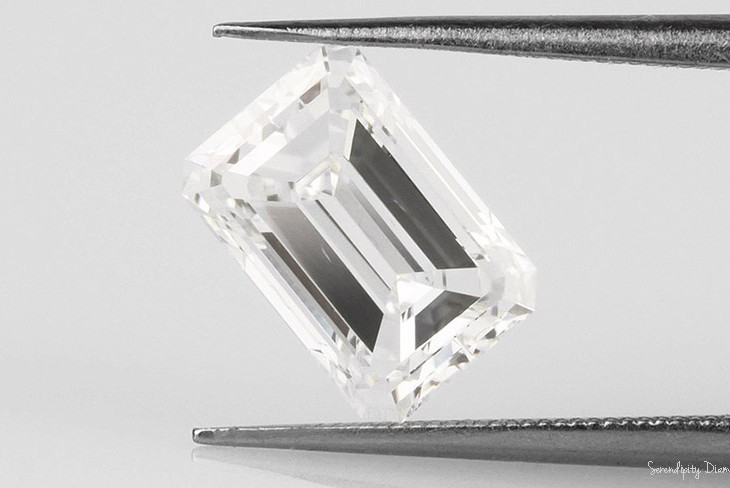Our photograph shows the visibility of a small feather seen below the table facet of an Emerald cut diamond. Feathers represent just one of the clarity characteristics associated with some diamonds.
Clarity Characteristics of Diamonds
Today’s post is devoted to the clarity characteristics of diamonds. There are many descriptions fitting for diamond inclusions. Today I’ve added each characteristic with a detailed description for each characteristic.
Study most GIA diamond grading certificates, and you will often see words such as ‘feather’ or ‘twinning wisp’ for clarity characteristics within the diamond or extending into the stone from the surface (inclusions) unless graded Internally Flawless.
All diamonds, with the exception of Flawless and Internally Flawless diamonds, feature inclusions. Depending on the concentration, laboratories assign specific clarity grades to a diamond. For example, Internally, Flawless and VVS diamond clarity grades represent very clear diamonds. Conversely, I2 and I3 clarity diamond grades represent low-clarity diamonds.
A-Z of Clarity Characteristics of Diamonds.
Please note that most of the following clarity characteristics will usually be very discreet, many only visible with a 10x lens and a trained eye. When appearing on a diamond certificate, they merely identify and specify the type of inclusion.
Bearded Girdle (BG)
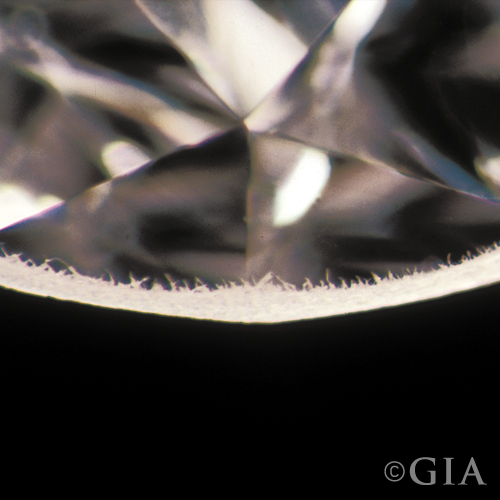
Bearded Girdle photograph courtesy GIA.
A bearded girdle forms as a result of the manufacture and cutting of the polished diamond. Microscopic feathers extend from the surface of the girdle (outer edge) into the diamond.
Bruise (Abbreviation: Br)
A small mark on the diamond, resulting from impact, extends into the diamond, below the surface of the stone. These small marks often appear where two facets meet, and the diamond is more exposed to damage.
Cavity (Abbreviation: Cv)
Where part of a feather (see below) breaks away from the diamond, a small crack-like opening, the cavity appears.
Chip (Abbreviation: Ch)
Impact or pressure can cause diamonds to chip. Chips are damaged and can vary in size and shape but typically appear as breaks in the stone’s surface, often seen at the point of the diamond, edge of a facet or culet of the stone.
Cloud (Abbreviation: Cld)
Clouds are formed by much smaller inclusions grouped in one area. Alone they are too small to be readily visible, but together they are more noticeable but of foggier and less distinct.
Feather (Abbreviation: Ftr)
Diamond feather is a term used for any internal diamond fracture or fissure extending to the surface of the stone. In higher-clarity diamonds, diamond feathers can be difficult to see, even when viewed under 10x magnification.
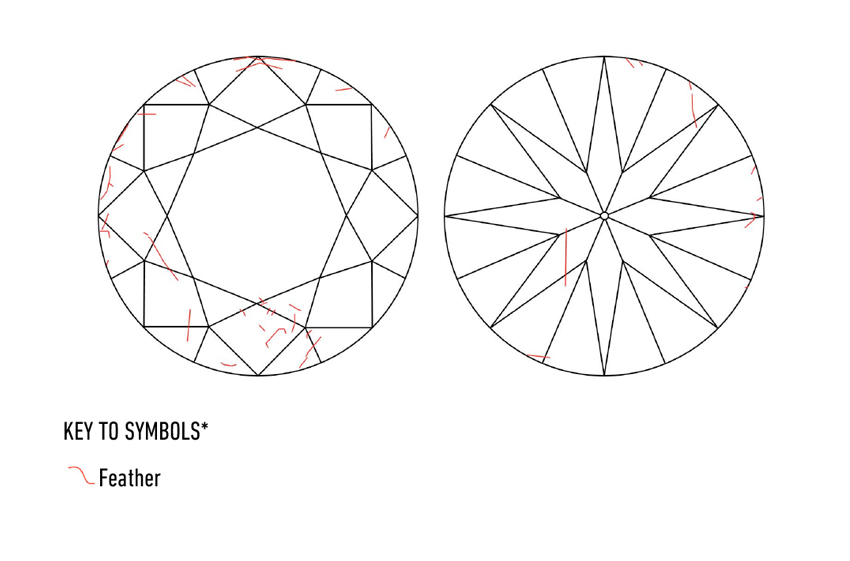
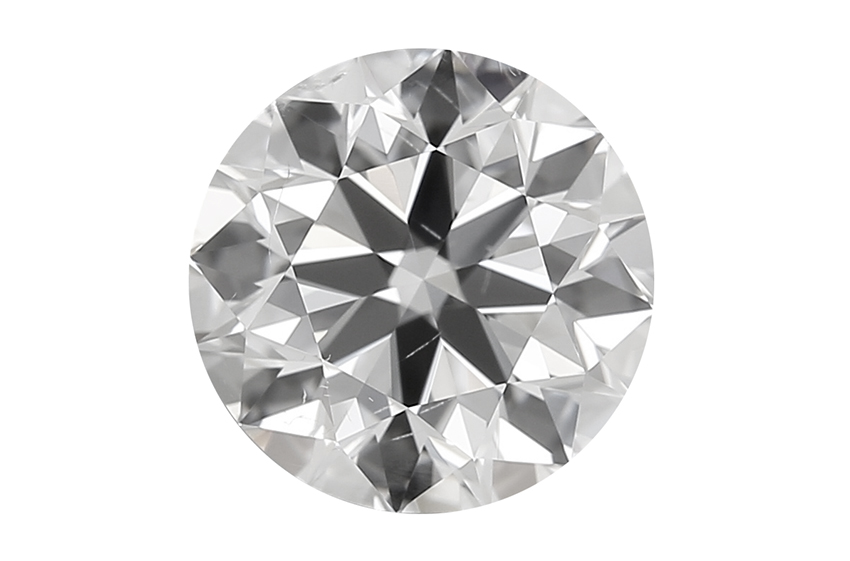
Grain Center (Abbreviation: GrCnt)
Caused by distortion of the diamond crystal, appearing either as light, or darker markings within the diamond, usually thread-like or of pin-point appearance.
Crystal Inclusions (Xtl)
A crystal inclusion appears as a crystallised formation within the diamond, formed by minerals captured during the growth of a diamond.
Crystal inclusions are minerals and can appear as colourless inclusions (diamond within a diamond), black (carbon), red (garnet), green (peridot) or any other mineral type.
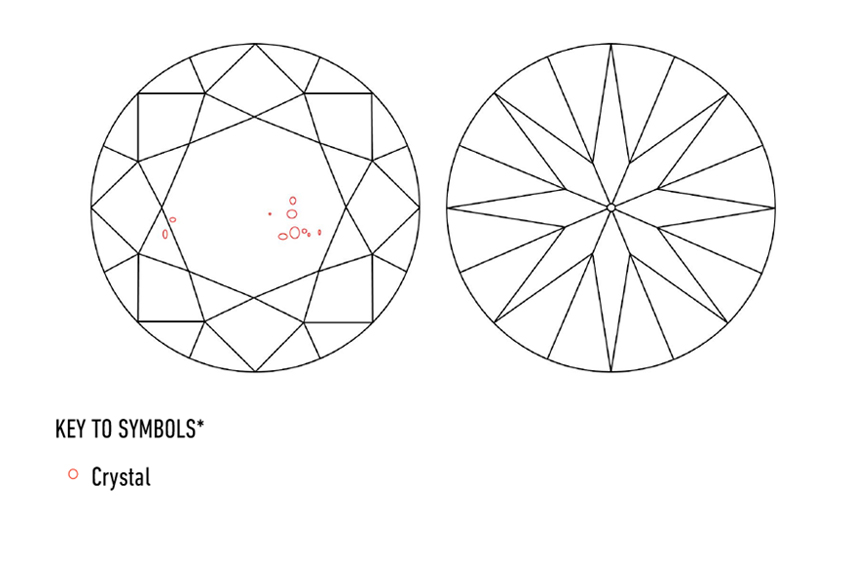
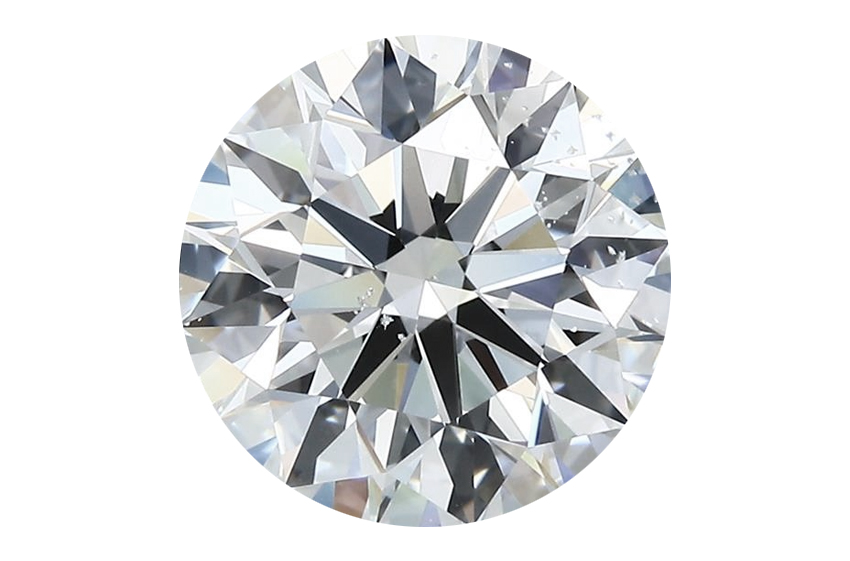
Indented Natural (Abbreviation: IndN)
This can be the result of a natural indent within the rough-diamond appearing in the polished diamond’s surface. If a crystal within the diamond reaches and falls away from the surface upon cutting and polishing the diamond, this can also reveal a natural indent within the surface of the stone.
Internal Graining (Abbreviation: IntGr)
Lines, Curves and inclusions appear at angles. Can be white, coloured or semi-transparent, caused by irregularities during diamond crystal formation.
Knot (Abbreviation: K)
This is a transparent included diamond crystal present within the diamond itself, extending to the surface following the process of cutting and polishing.
Laser Drill Hole (Abbreviation: LDH)
A fine, straight hair-like line extends from the surface of the diamond. Laser drill holes are the result of a beam of laser drilling into the diamond, typically part of the process for clarity treatment. (Which should be disclosed by those selling such clarity-enhanced diamonds.) These are usually best seen at an angle and extend from a microscopic pin-prick size hole anywhere on the surface of the diamond.
Needle (Abbreviation: Ndl)
This type of inclusion appears as a thin, needle-like inclusion, which can vary in length.
Pinpoint (Abbreviation: Pp)
A small dot-like inclusion within the diamond.
Twinning Wisp (Abbreviation: W)
Twinning wisps appear as a series of pinpoints, clouds or crystals formed in a diamond’s growth plane—associated with crystal distortion and twinning planes.
Basically, twinning wisps appear as tiny needles, clouds, pinpoints, and crystals arranged along the diamond’s twinning plane or resulting from distortion during growth. Our example below shows twinning wisps more visible from the back of the diamond in this instance.
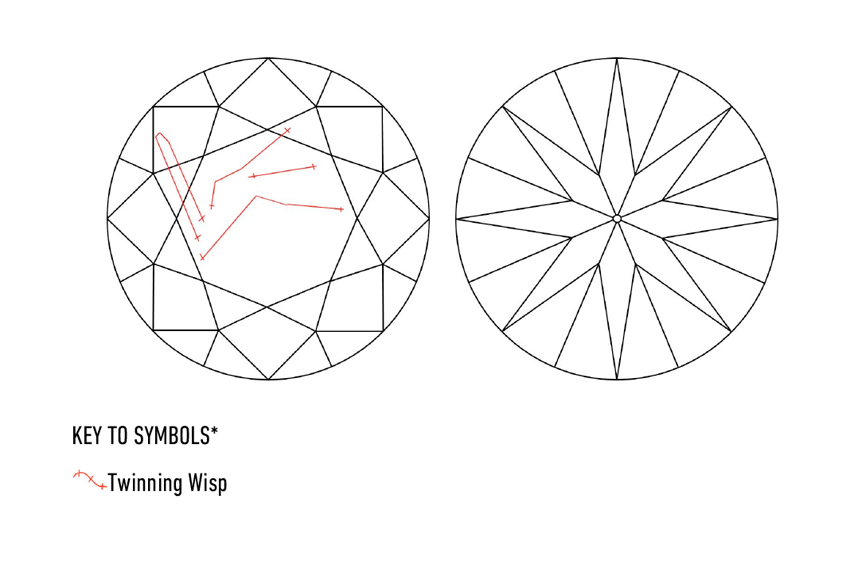
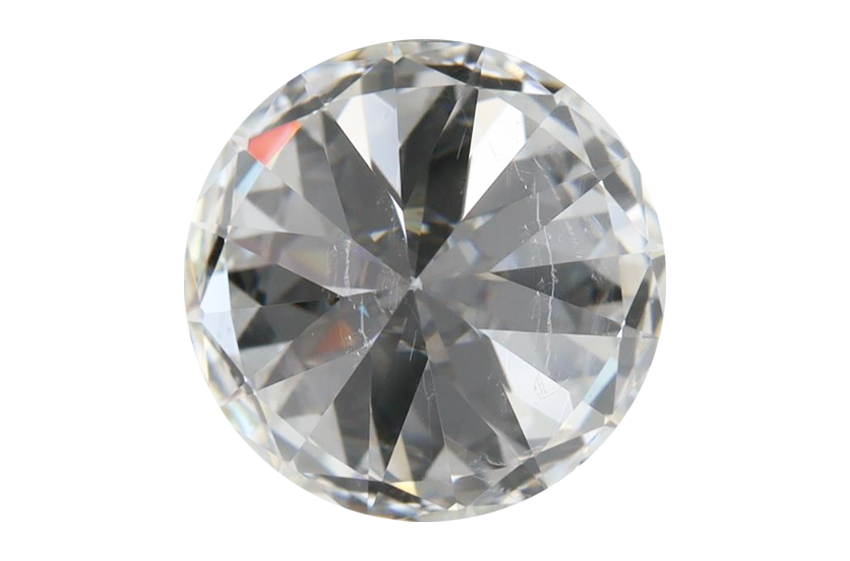
How do Diamonds form, and why are some more included than others?
Unique Diamond clarity characteristics appear in most Diamonds. These inclusions are a result of the intense heat and pressure of the Earth’s crust. These conditions alter the structure of the carbon atoms within the Diamond while it is being formed.
The alteration that occurs is what causes Diamond inclusions to appear. Depending on the conditions, some Diamonds may have more inclusions than others. For example, a Diamond that has been under more extreme conditions may have many more inclusions than one that has not been under such extremes.
Diamonds form in various environments, which accounts for the differences in colour clarity and size.
Are there some Diamond clarity characteristics that are worse than others?
In terms of what to avoid with Diamond inclusions, there are several factors to think about. You can also read more about the clarity grades of Diamond inclusions and what this means for your Diamond.
Size of Diamond Inclusions
Diamond inclusions which are smaller in size, can make a Diamond look eye-clean. A Diamond with one or two larger inclusions will be more visible to the naked eye. Diamond inclusions that tend to be harder to see within a Diamond can include pinpoints, which look just like the point of a pin, and clouds, which are the same colour as the rest of the Diamond, so are therefore harder to see.
Some microscopic inclusions disperse evenly, giving the diamond the appearance of being cloudy or dull.
Type of Diamond Inclusions
Black spots, cavities and chips are all inclusions which are more likely to be visible. This is because they can be larger and darker. Black spots can look like frogspawn, in some people’s opinion, just to give you an example. Chips within a Diamond, however, will alter the outer appearance of the Diamond more than anything. They may also weaken the structure of your Diamond if they are in the wrong place. You can visit our previous blog post on Diamond Clarity Characteristics for more information on the various Diamond inclusion types.
Chart of internal clarity characteristics
We have listed a chart below to summarise the various clarity characteristics often noted on diamond certificates.
| Clarity Characteristic | Description |
|---|---|
| 1. Bearding | A string-like flaw formed on the girdle (edge) during the bruting process. Generally acceptable if not too overwhelming, as it doesn’t directly affect the diamond’s face. |
| 2. Cavity | An opening resulting from diamond cutting, often caused by attempts to remove flaws like feathers or crystals. Considered on a case-by-case basis, especially for higher clarity levels. |
| 3. Chip | A portion of the diamond that has chipped off, typically found on the rim or bottom. Caused by careless usage or inexperienced setting. Common in secondhand or well-worn diamonds. |
| 4. Cloud | Clumping of pinpoints or crystals. Scattered clouds are normal, but prevalent clouds may severely affect brilliance, making the diamond appear milky. |
| 5. Crystal | Natural minerals inside diamonds, coming in various forms. Black and green crystals can significantly impact beauty and value. Requires physical inspection. |
| 6. Feather | A small crack or inclusion within the diamond. Visibility depends on the angle. Excessive feathers can affect durability or introduce undesirable colors. |
| 7. Graining | Caused by abnormal crystal growth, appearing as colorless, colored, or scratchy lines. Too much graining can make the diamond look wrinkled and muddled. |
| 8. Indented Natural | A dent below the diamond surface due to the cutter’s decision not to remove it. Common on edges and can be hidden with a prong setting by a skilled setter. |
| 9. Needle | Long and thin needle-like flaw, usually appearing as white or colorless. Clusters may affect beauty; small ones not visible on the diamond’s face are acceptable. |
| 10. Pinpoint | A small point within the diamond, black or white. Should not have more than 3 points in the same location, or GIA will label it as a “Cloud.” Minor flaws that don’t directly affect beauty. |
| 11. Twinning Wisp | Result of abnormal crystal growth, resembling a tree’s roots. Common in fancy shapes. A combination of inclusions like pinpoints, crystals, feathers, and clouds, often found in lower clarity diamonds. |
Position of Inclusions within a diamond
Diamond inclusions on the table of the Diamond are going to be more visible and, therefore less desirable. You may not find this a problem, however. Most jewellers tend not to sell Diamonds with table inclusions for this exact reason. Diamond inclusions further into the Diamond can have both pros and cons, too, though. They can be well hidden within the facets. But, if they are in just the wrong place, they can be reflected in the other facets. This can make it look like one inclusion is multiplied many times. Some Diamond inclusions are strategically hidden by claws, too.
Diamond cuts and Inclusions
Diamond inclusions are less visible in some cuts of diamonds. Emerald cuts, for instance, are ‘honest’ stone cuts. Inclusions are not easily as hidden in an Emerald cut as it has fewer facets. On the other hand, Round Brilliant cut Diamonds are more likely to be able to ‘hide’ inclusions. This is because they have more facets.
Diamond Laboratory Grading
Diamond inclusions are often referred to as Diamond characteristics. This is because Diamond colour and clarity can vary depending on the person grading them. A universal standard is adhered to, but this can differ ever so slightly from laboratory to laboratory. For Example, GIA (The Gemological Institution of America) tend to be very exact with their grading.
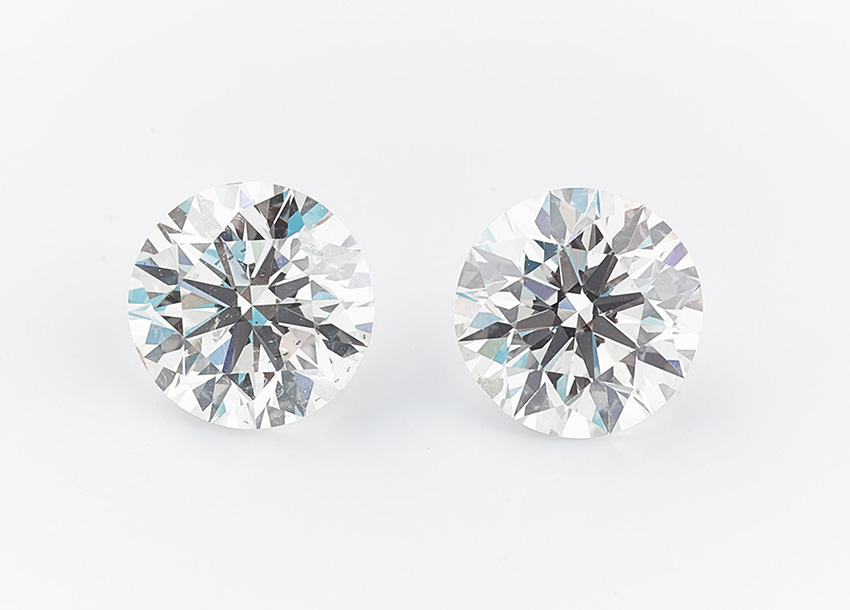
The above picture shows two Diamonds which have been graded with the exact same colour and clarity. The one on the left has been graded by IGI.
The one on the right by GIA. GIA tend to be more strict on their grading. Therefore the one on the right has fewer small inclusions, while the left-hand Diamond has more small Diamond inclusions dotted throughout.
For more information, don’t forget to stop by our diamond education section of the website.
Frequently asked questions
Yes, even diamonds created in a laboratory have inclusions. Lab-grown diamonds are graded in the same way as natural diamonds. Different factors affect the types of inclusion, such as the speed of growth and imperfections in the lab-grown rough.
First, look at the clarity grade of your diamond. If the clarity grade assessment is VS1 or above, don’t worry about the presence of clouds, feathers or crystals, which will appear invisible to the naked eye.
Yes. All lab-grown diamonds are graded for colour and clarity. However, only diamonds above 0.30-carats typically include a diamond certificate. Generally, most lab diamonds achieve much higher colour and clarity grades.
About Mark Johnson
My name is Mark and I'm founder at Serendipity Diamonds. I have 30 years or experience in polished diamonds and jewellery. Today, I work with an expert team in our Isle of Wight jewellery showroom located in Ryde. Most of my work involves helping clients in our showroom, working on our two websites and photographing jewellery commissions.



